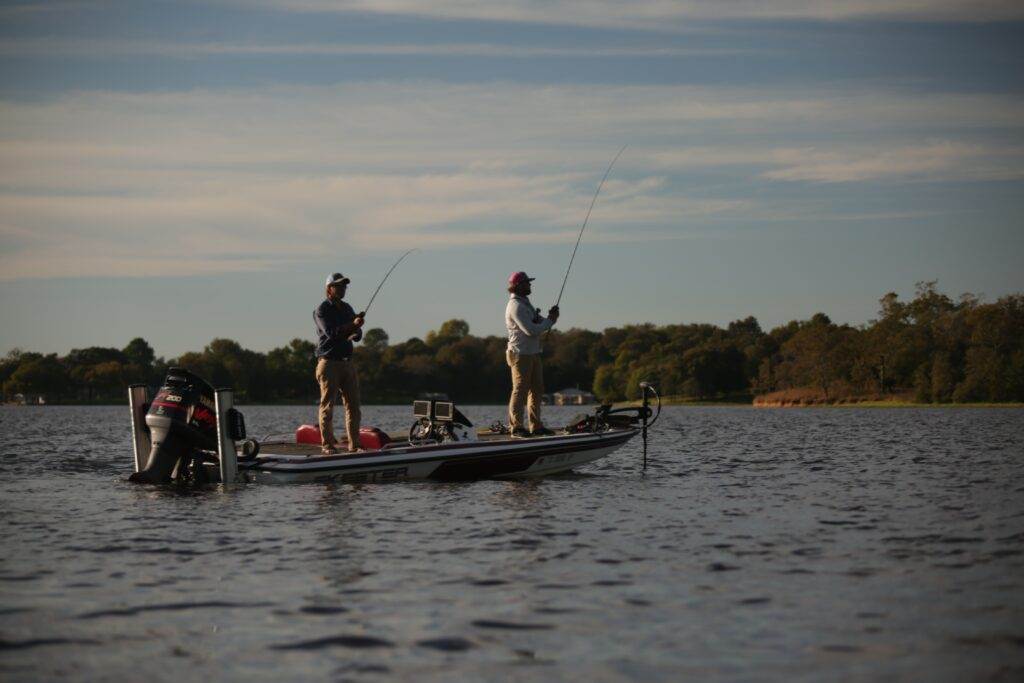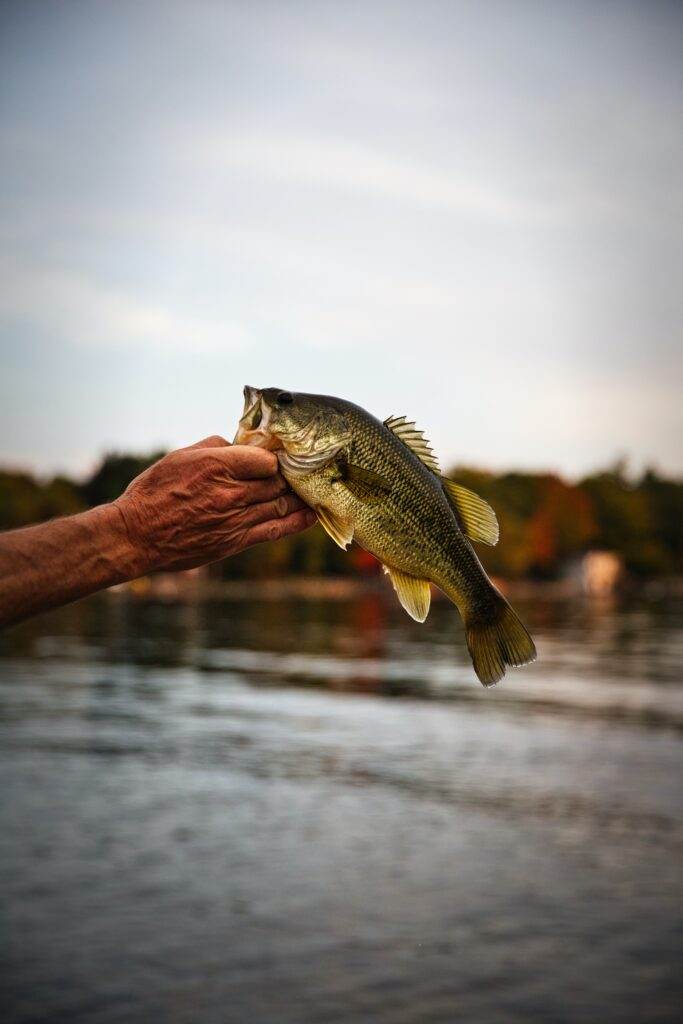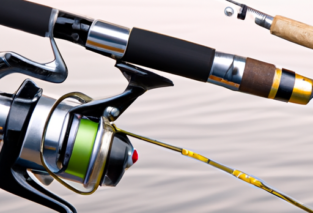Bass fishing enthusiasts, listen up! If you’ve ever wondered whether fall is a good time to cast your line and reel in those prized catches, then “Can You Go Bass Fishing in Fall: Essential Tips and Techniques” is for you. This must-have guide is packed with invaluable information on how to make the most of your bass fishing adventures during the autumn season. From understanding the changing behavior of bass to selecting the perfect bait and mastering the art of casting, this comprehensive resource has got you covered. So grab your fishing gear and get ready to embark on an unforgettable fall fishing journey.

Best Time to Bass Fish in Fall
Fall is a fantastic season for bass fishing, and knowing the best time to hit the water can greatly increase your chances of landing a trophy fish. Being aware of the changes in bass behavior during fall is key to a successful fishing trip. Additionally, finding the ideal fishing spot can make all the difference in your catch rate. In this article, we will explore the best time to bass fish in fall, understand bass behavior during this season, and discover how to find the perfect fishing spot.
Understanding Bass Behavior in Fall
During fall, bass undergo significant changes in their behavior as they prepare for the colder months ahead. Understanding these behavioral patterns is crucial for any angler looking to catch bass during this season.
As the water temperatures start to cool down, bass become more active and start feeding more aggressively. They instinctively know that winter is approaching, and they need to build up their energy reserves to survive. This increased activity makes fall one of the best times to catch bass as they are actively seeking out prey.
Additionally, bass in the fall tend to gather in schools, making them more predictable and easier to find. They are often found in shallower water near the banks, as well as around submerged structures such as fallen trees, rock piles, and weed beds. They use these structures as cover and ambush points to feed on smaller fish and other prey.

Finding the Ideal Fishing Spot
To maximize your chances of catching bass in the fall, it’s important to identify the ideal fishing spot. Start by looking for areas with plenty of cover and structure, such as submerged vegetation, rocks, and fallen trees. These areas provide hiding places for prey and attract bass in search of an easy meal.
Transition zones, where shallow water meets deeper water, are prime locations to find bass during fall. Bass use these transitional areas to move between their summer and winter habitats, and they can often be found staging here before moving into deeper water for the winter. Pay close attention to drop-offs, ledges, and points in these areas, as they can concentrate bass activity.
Another aspect to consider when choosing a fishing spot is the presence of baitfish. Bass are opportunistic predators and will actively seek out schools of baitfish, such as shad and minnows, during fall. Look for signs of baitfish activity such as surface disturbances, diving birds, or schools of fish breaking the surface. Where there are baitfish, there are usually bass nearby.
By combining your knowledge of bass behavior in the fall with an understanding of the ideal fishing spots, you’ll be well on your way to a successful bass fishing trip.
Essential Tips for Fall Bass Fishing
Now that you understand bass behavior in the fall and how to find the perfect fishing spot, let’s explore some essential tips that will help improve your chances of catching bass during this season.
Adjust Your Techniques
Fall bass fishing requires adapting your techniques to match the changing behavior of the fish. As water temperatures cool, bass become less active and more finicky with their feeding. Slowing down your presentations and using finesse techniques can entice even the most cautious bass to bite. Consider using techniques such as drop shot fishing or finesse worm fishing to target less aggressive bass.
Use Vibrant Lures
During the fall, bass can be more aggressive towards lures that imitate the movements and colors of the prey they are actively feeding on. This is the perfect time to break out your collection of vibrant lures such as crankbaits, jerkbaits, and spinnerbaits. Opt for lures that mimic the natural patterns and colors of fall prey, such as shad or crayfish.
Experiment with Different Depths
Bass can be found at various depths during the fall, depending on the water temperature and the availability of prey. Experimenting with different depths can help you pinpoint the most productive zone. Start by fishing shallow areas near the banks, especially in the morning and late afternoon when the water is warmer. As the day progresses and the sun rises higher in the sky, consider moving deeper and targeting drop-offs and points.
Pay Attention to Water Temperature
Water temperature plays a crucial role in bass behavior during fall. As the temperature continues to drop, bass will gradually move into deeper water to find more stable conditions. Use a thermometer to monitor the water temperature and adjust your fishing techniques accordingly. If the water temperature is still relatively warm, focus on shallower areas. As the temperature drops, transition to deeper water and target structure and cover.
Fish the Transitional Areas
We mentioned earlier that transitional areas are key locations for fall bass fishing. These areas act as highways for bass as they move between their summer and winter habitats. By focusing your efforts on these transitional zones, you increase your chances of intercepting a school of actively feeding bass. Look for points, drop-offs, and ledges that act as natural funnels for bass movement.
Keep an Eye on the Weather
Weather conditions can greatly impact bass behavior in the fall. Pay attention to changing weather patterns, as they can influence the activity level of the fish. Bass tend to be more active and feed aggressively before a cold front, while their activity may decrease during or after a front passes through. Understanding these weather patterns can help you plan your fishing trips accordingly and increase your chances of success.
Utilize Live Bait
If you’re not having much luck with artificial lures, consider using live bait during your fall bass fishing ventures. Live bait such as shiners, minnows, or nightcrawlers can be particularly effective when bass are less active and more reluctant to strike. Present the live bait in a natural manner, using techniques such as Carolina rig fishing or Texas rig fishing, and entice the bass to bite.
Consider Fishing at Different Times of the Day
Fall offers a wide range of fishing opportunities throughout the day. To increase your chances of catching bass, consider fishing during different times of the day. Bass tend to be more active during the early morning and late afternoon, as the water temperature is typically warmer. However, don’t overlook the potential for midday fishing, especially during overcast or cloudy conditions. Bass can still be feeding actively even in the middle of the day.
Be Patient and Persistent
Bass fishing in any season requires patience and persistence, and fall is no exception. While fall can be a productive time for bass fishing, it’s important to remember that not every day will result in a trophy catch. Be prepared for slower days and don’t get discouraged. Keep trying different techniques, lures, and fishing spots, and eventually, your persistence will pay off.
Practice Catch and Release
As responsible anglers, it’s crucial to practice catch and release, especially during the fall when bass are preparing for winter. By releasing the fish you catch, you are allowing them to complete their biological processes and maintain healthy populations. Handle the fish with care, minimize their time out of the water, and release them back to continue their lifecycle.

Techniques for Fall Bass Fishing
Now that we’ve covered the essential tips for fall bass fishing, let’s dive into some specific techniques that are effective during this season. Each technique has its own unique characteristics and is best suited for different fishing conditions.
Topwater Fishing
Topwater fishing can be incredibly exciting during the fall, as bass are often found chasing schools of baitfish near the surface. Using topwater lures such as buzzbaits, poppers, and frogs can entice explosive strikes from aggressive bass. Cast your lure near cover or structure and work it with rhythmic movements to mimic the movements of injured or fleeing prey.
Jerkbait Fishing
Jerkbaits are versatile lures that imitate injured baitfish. They are designed to be twitched and jerked to create a realistic erratic action that attracts bass. Use suspending or slow-sinking jerkbaits and vary your retrieval speed to find the most effective presentation. Focus on areas with submerged cover, points, or drop-offs where bass are likely to be feeding.
Crankbait Fishing
Crankbaits are effective lures for covering a large area and tempting bass to strike. During the fall, opt for medium-depth crankbaits that can dive to the appropriate depth to target bass suspended along drop-offs or near structures. Experiment with different retrieve speeds and pay attention to any changes in the bait’s action that trigger bass to bite.
Jig Fishing
Jig fishing is a versatile technique suitable for almost any season, including fall. Choose jigs with natural-colored skirts and pair them with trailers that resemble prey commonly found in your fishing area. Cast your jig near cover such as rocks, fallen trees, or weed beds, and use a slow, methodical retrieve. The bottom-hopping action of the jig can entice bass into striking.
Drop Shot Fishing
Drop shot fishing is a finesse technique that is effective for tempting finicky bass. Rig a drop shot with a finesse worm or a small rubber bait, and use it to target bass in deeper water or around submerged cover. Keep your presentation close to the bottom and use subtle twitches to mimic the movements of natural prey. Be patient and allow the bass to inspect your bait before setting the hook.
Worm Fishing
Worm fishing is a tried and true technique that consistently produces results. Use plastic worms in natural colors and rig them weedless or Texas-style to minimize snags. Cast your worm near cover or structure and use a slow, dragging retrieve to imitate a natural meal for the bass. Pay close attention to any subtle bites or twitches in your line, and be prepared for a quick hookset.
Spinnerbait Fishing
Spinnerbaits are versatile lures that can be fished at various depths and speeds. Choose spinnerbaits with vibrant blades that create flash and vibration to attract bass. Experiment with different sizes and colors to find the most effective combination. Cast your spinnerbait near structure or cover, and retrieve it at a speed that imitates the prey bass are actively feeding on.
Carolina Rig Fishing
The Carolina rig is a popular technique for targeting bass in deeper water or along drop-offs. Rig a soft plastic bait, such as a creature bait or a brush hog, on a Carolina rig and present it to bass on the bottom. Use a slow and steady retrieve, dragging or hopping the bait along the bottom to entice strikes. This technique is particularly effective when bass are less active and feeding near the bottom.
Texas Rig Fishing
The Texas rig is another versatile technique that is effective for fall bass fishing. Rig a soft plastic bait, such as a worm or a creature bait, weedless on a Texas rig and work it through cover or structure. Make short pauses and gentle twitches to mimic the movements of natural prey. The Texas rig is ideal for targeting bass in shallow areas near the banks or around submerged vegetation.
Finesse Fishing
When all else fails, finesse fishing can save the day. Use light line, small hooks, and compact baits to entice finicky bass that are not responding to more aggressive presentations. Techniques such as Ned rig fishing, wacky rig fishing, or drop shot fishing can be effective during fall when bass are less active. Slow down your presentation, keep a keen eye on subtle strikes, and be prepared for a delicate hookset.
Gear and Equipment
Now that you have a good understanding of the techniques and tips for bass fishing in the fall, let’s discuss the gear and equipment you’ll need to maximize your chances of success.
Choosing the Right Rod and Reel
Selecting the right rod and reel setup is crucial for a successful bass fishing trip. Medium to medium-heavy power rods with fast or extra-fast action are suitable for most fall bass fishing techniques. Pair your rod with a baitcasting or spinning reel that can handle the weight of the lures and provide a smooth drag system for fighting bass. Consider the size and weight of the lures you plan to use when choosing your rod and reel.
Selecting the Right Line
Choosing the right fishing line is essential for fall bass fishing. Monofilament, fluorocarbon, and braided lines all have their advantages and are suitable for different situations. Monofilament lines are more forgiving and have good knot strength, making them suitable for beginners. Fluorocarbon lines are virtually invisible underwater and have excellent abrasion resistance, making them ideal for fishing around cover. Braided lines offer superior strength and sensitivity, making them a good choice for fishing in heavy cover or for techniques that require long casts.
Picking the Appropriate Lures
Having a well-stocked tackle box is essential for fall bass fishing. Aim to have a variety of lures that cover different depths, colors, and actions. Crankbaits, jerkbaits, spinnerbaits, jigs, soft plastic worms, and topwater lures should all be part of your arsenal. Tailor your lure selection to match the natural prey found in your fishing area and experiment with different sizes and colors until you find what works best.
Essential Terminal Tackle
Terminal tackle refers to the hooks, weights, and other components that are attached to the end of your line. It’s important to have a variety of hooks, weights, and swivels in your tackle box to accommodate different fishing techniques. Offset wide-gap hooks are popular for soft plastic bait presentations, while treble hooks are commonly used on crankbaits and jerkbaits. Bullet weights, drop shot weights, and split shot weights are essential for adding weight to your rigs and getting your bait to the desired depth.
Additional Accessories
There are a few additional accessories that can enhance your fall bass fishing experience. A good quality landing net can help you safely land and release bass without causing harm to the fish. Needle-nose pliers or a hook remover tool are essential for safely removing hooks from the bass’s mouth. Don’t forget to bring a tackle bag or box to keep your gear organized, as well as sunscreen, a hat, polarized sunglasses, and a waterproof jacket to protect yourself from the elements.

Safety Considerations
While fall bass fishing can be an enjoyable and rewarding experience, it’s important to prioritize safety on the water. Here are a few safety considerations to keep in mind before heading out for a day of fishing.
Wear Appropriate Safety Gear
Wearing appropriate safety gear is crucial for a safe fishing trip. Always wear a properly fitting personal flotation device (PFD) or life jacket when on the water, especially if you’ll be in a small boat or kayak. Additionally, wear polarized sunglasses to protect your eyes from the sun’s glare and to enhance your visibility in the water. Regardless of the season, it’s important to protect yourself from the harmful effects of the sun, so apply sunscreen and wear a hat and appropriate clothing to shield yourself from UV rays.
Be Mindful of Weather Conditions
Weather conditions can change rapidly, particularly during fall. Keep an eye on weather forecasts and be prepared for sudden changes in temperature, wind, or precipitation. Dress in layers to accommodate changing weather conditions and bring rain gear in case of unexpected showers. If lightning or severe weather is expected, it’s best to postpone your fishing trip for another day. Safety should always be the top priority when it comes to outdoor activities.
Fishing with a Partner
Fishing with a partner can greatly enhance safety on the water. Having another person nearby provides an extra set of eyes and can be invaluable in case of an emergency. Additionally, if you’re planning to fish in remote or unfamiliar areas, fishing with a partner can provide reassurance and an extra level of safety. Remember to communicate your plans and ensure that someone knows when and where you’ll be fishing.
Familiarize Yourself with Local Regulations
Before heading out for a day of fall bass fishing, familiarize yourself with local fishing regulations and any permits or licenses that may be required. Follow catch and size limits, as well as any specific rules or restrictions for the body of water you’ll be fishing in. Respecting these regulations helps protect the bass population and ensures a sustainable fishery for future generations of anglers.
In conclusion, fall offers an excellent opportunity for bass fishing with its changing bass behavior and prime fishing spots. Understanding the behavior of bass during fall, such as their increased activity and preference for transitional areas, can greatly improve your chances of success. Implementing the essential tips and techniques, such as adjusting your techniques, using vibrant lures, and fishing at different depths, can entice even the most reluctant bass to bite. Equipping yourself with the right gear, practicing safety considerations, and respecting local regulations will ensure a safe and enjoyable fall bass fishing experience. So grab your rod and reel, head out to your favorite fishing spot, and enjoy the exhilaration of fall bass fishing. Happy angling!





